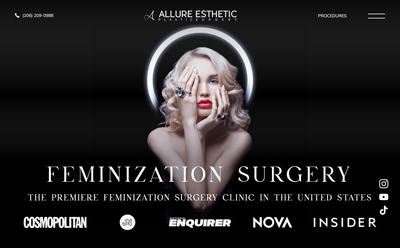Your Consultation with Dr. Sajan
During your consultation with Dr. Sajan, discuss the concerns you have regarding your scar(s) as well as your expectations of scar revision. Dr. Sajan will evaluate the scar area and the overall appearance and condition of your skin. He also will evaluate any restriction of movement and discomfort you may be experiencing because of the scarred tissue.
Because scar tissue can be highly variable in size, depth, color, texture, etc., your scar revision procedure also will have variables including the time, sedation/anesthesia, and techniques required to perform the revision.
 FeminizationSurgeries.com
FeminizationSurgeries.com
